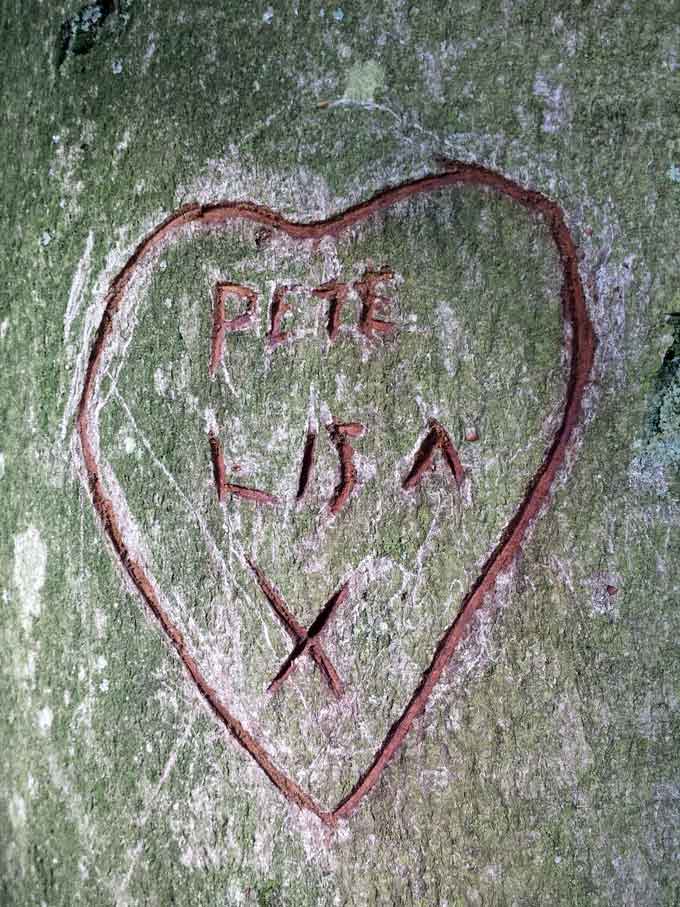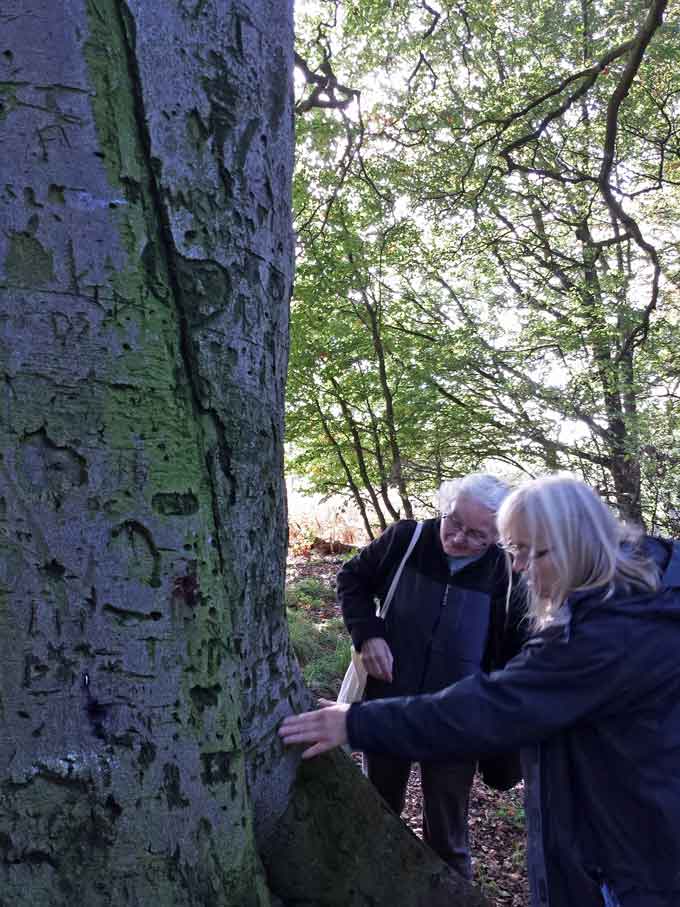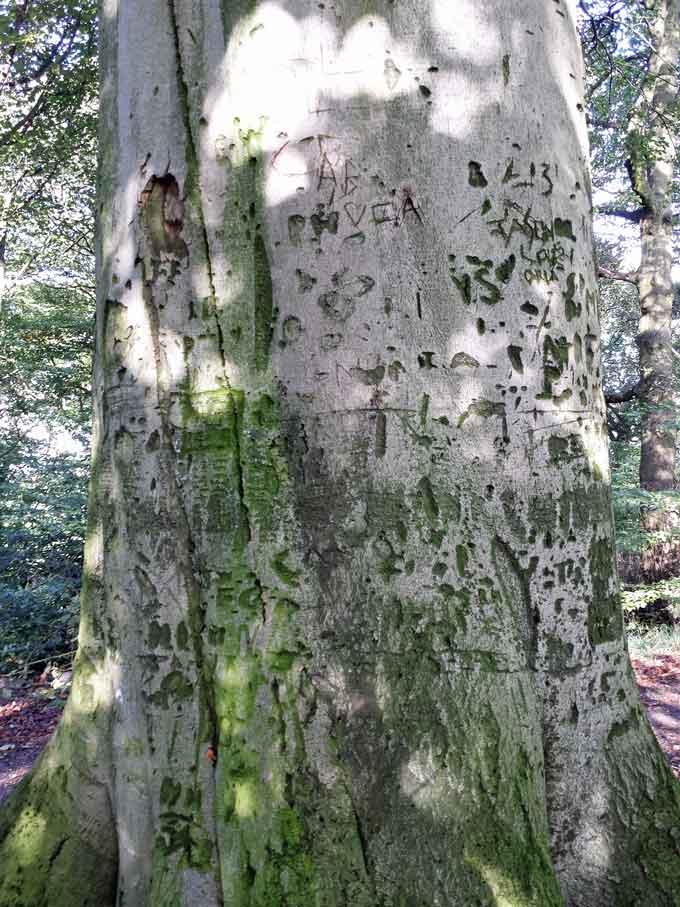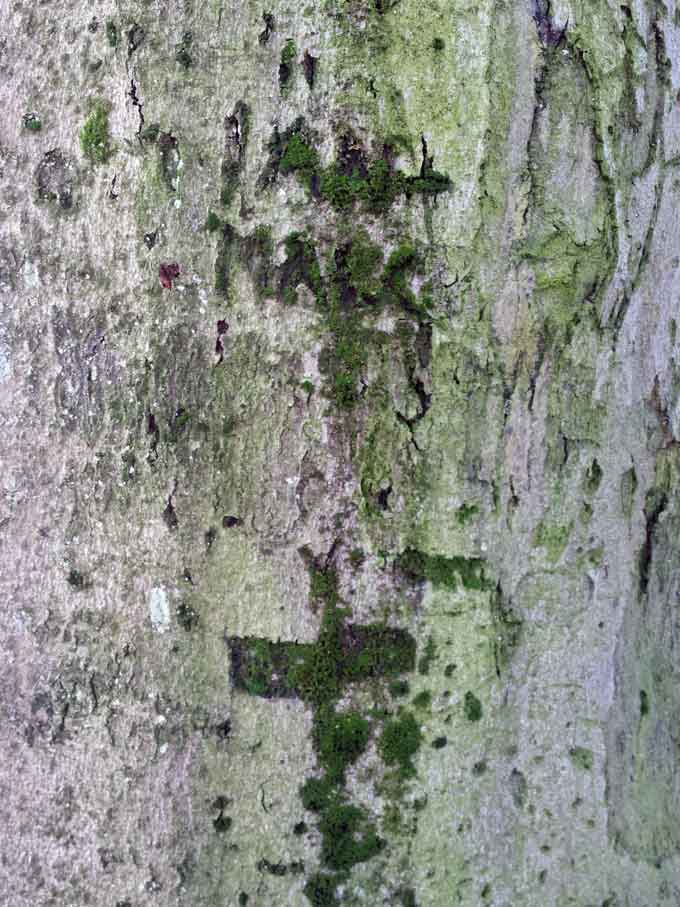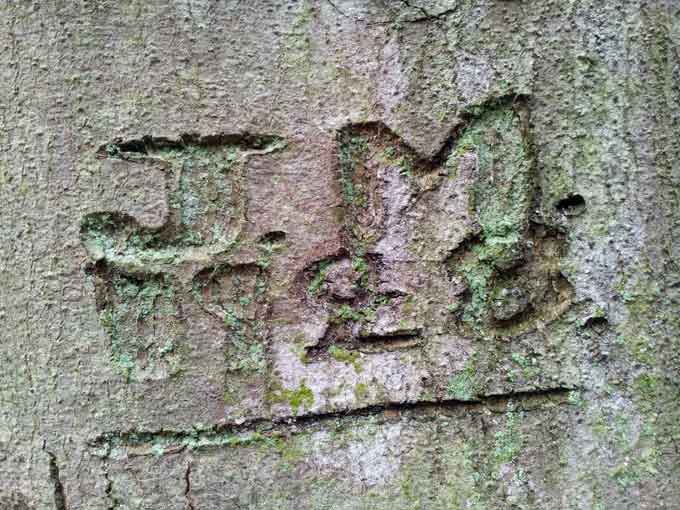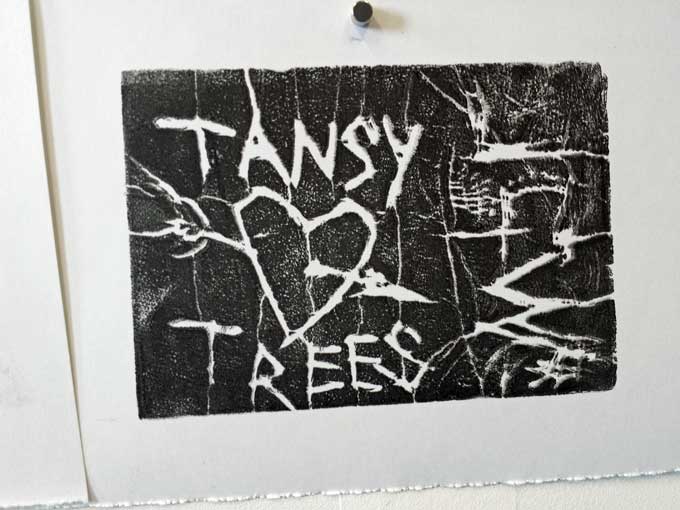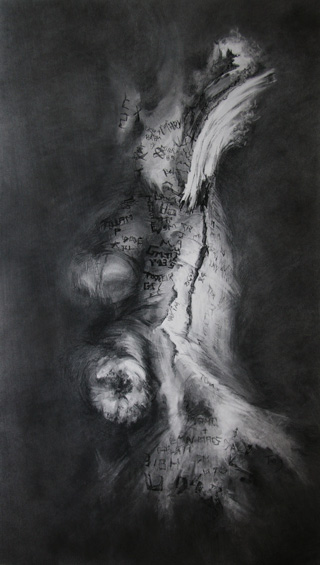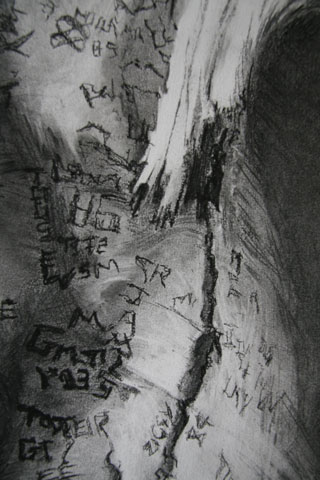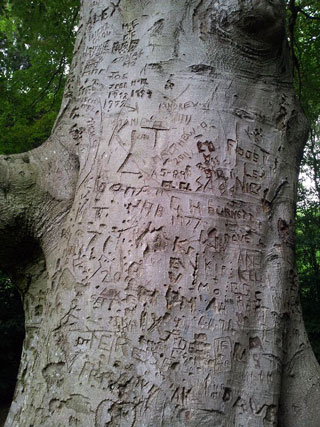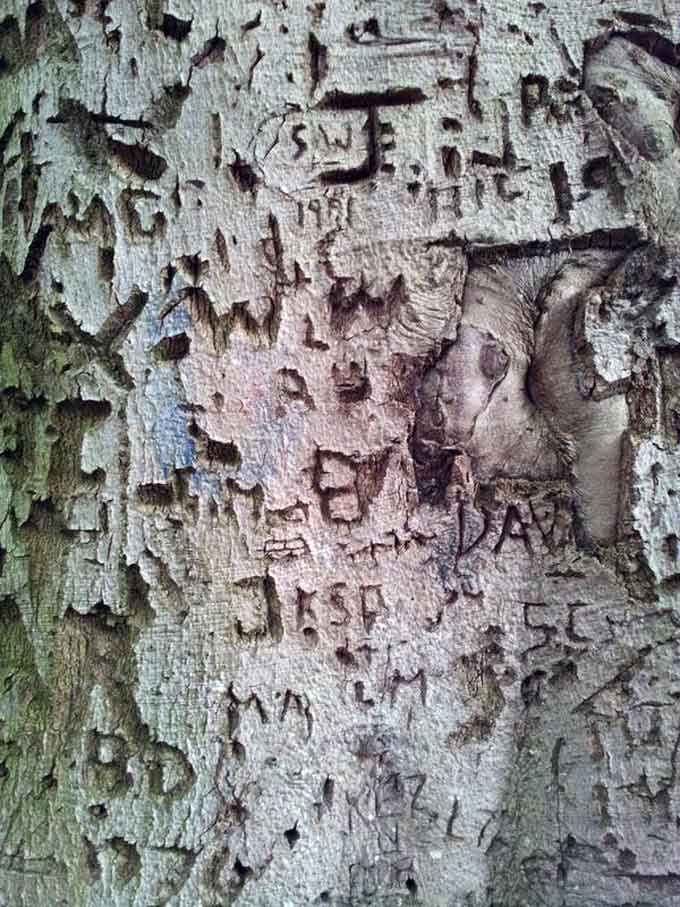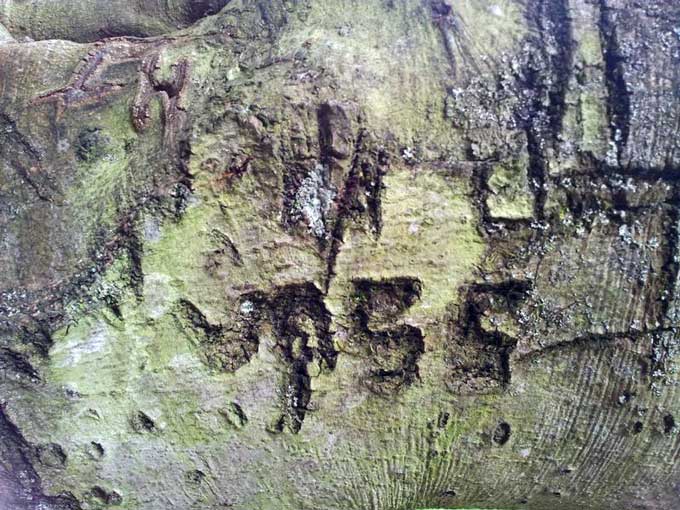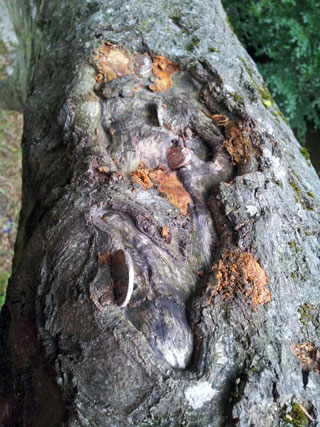I’m wondering who Pete and Lisa are… one or both of them were at this beech tree recently and left their mark, so fresh that I thought it had been painted at first. It’s a perfect example of the capacity of tree carving to provoke our curiousity and an ideal starting point for inspiring other artworks – just what ‘Tree Stories’, a new project I’m involved in, seeks to capture.
‘Tree Stories’ will be launched soon, with a Discovery Day event at the end of October to introduce the project to the people of Sheffield and North Derbyshire.
Project leader Christine Handley, myself and poet, song and scriptwriter Sally Goldsmith went out last week to investigate marked trees in Graves Park, Sheffield. We’ll be visiting some of them again with people on the Discovery day, then making prints, plaques and poems in response.
An illustration of how letters have stretched over time, with interesting contrasts between crisp new carvings and deformed old ones.
We thought this one read IAN + MARC, with what at first looked like a cross, but on closer inspection seemed to be a butterfly with little antennae. Beautifully mossy inside the carvings.
The project will run until the end of next year, so there will be plenty more tree graffiti related posts. Until the next installment you can find more information on the project page and my first Tree Stories post, and also regular updates on my facebook page.
